Vibrant Kawaii Aesthetic Belies a Ruthless Precision 2D Platformer
Developed by solo indie game developer @saebashi and published by PLAYISM, Tokoyo released on June 2nd, 2022 for Nintendo Switch and Steam on PC. Tokoyo is a 2D sprite-based platformer in which you are tasked with climbing a tower that changes every 24 hours. It includes a global cross-console leaderboard in which all players’ scores are recorded and ranked for the day. As you climb the floors and progress through the tower, you face a diverse cast of enemies, deviously designed traps, and quite a few bosses with unscrupulous attack patterns. However, your character is only given one attack ability that comes with a 30 second cooldown – meaning that your primary means of progressing is raw platforming ability.
Tokoyo features cute animated sprites and beautiful vibrant levels, though there can sometimes be serious screen clutter with certain characters on some of the busier floors. The music is also of the same sort of saccharine design, often with a perky kawaii uplift, although it begins to adopt more ominous tones in the later stages to better match the ruthlessness.
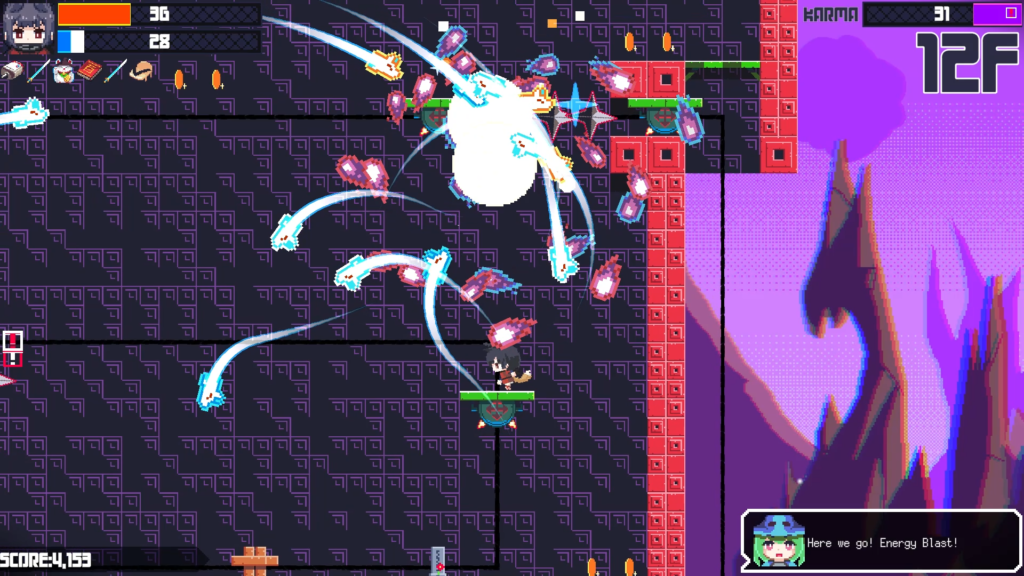
The 24-hour lifecycle of a tower
So the technological centerpiece of Tokoyo is its daily restructuring of its tower, along with its leaderboard. Featuring a countless number of levels that are also unique in every tower permutation, Tokoyo promises to endlessly deliver content by way of procedurally generated levels. As you climb the day’s randomized structure, you collect coins and avoid damage to increase your score, which is ranked among all other players after you win or die. The daily tower offers even more permutations by way of shrines, where the player can choose one of two paths, a feature that I found wildly helpful when dying to extremely difficult floors.
The tower’s basic level is a floor, and a day’s tower is somewhere around 50 floors, though there are a few safe floors in the mix. The floors are also divided into regions, and each region adds more enemy and trap types. At the end of a region will be either a shrine or a boss – they feature an array of weapons that must be avoided while attacking the boss with your singular attack ability. And at the end of the last region awaits an extra kawaii final boss with unbelievably tricky attack patterns and a massive health pool.
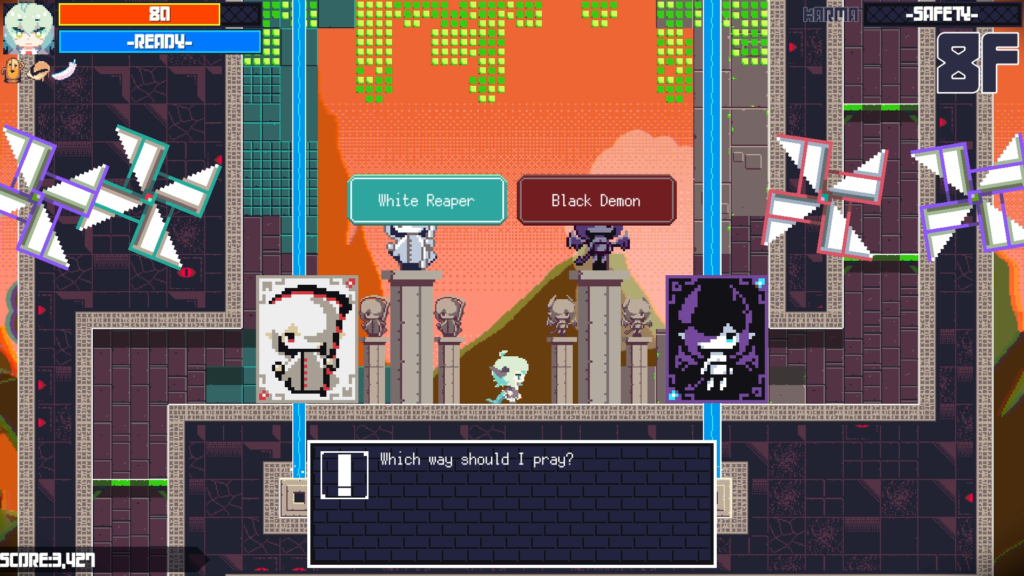
Simple game mechanics, devious level design
In Tokoyo, you can control your character by moving, jumping with a double jump, and attacking with a 30 second cooldown ability. The jumps offer full air control, and the precision is helpful in navigating the procedurally generated levels. There are no other mechanics like parrying or dashing, so each action must be considered carefully and executed with full confidence.
Your run-n-jump abilities will be put to the test as you navigate the tower and overcome its challenges. There are early stage enemies that slowly crawl around the perimeter of the room, and there are late stage enemies that chase you relentlessly through walls in giant packs. There are gun traps that shoot all manner of projectiles from plasma barrages to laser beams, spike traps that move faster when you walk near them, and the classic spinning sawblades on a track. Some levels are designed for you to run full speed into the cycle and autorun while dodging danger, while others specifically punish you for mindlessly trying to match a cycle, luring you in with the sweet promise of expedited clear times and rewarding you with a mace to the face.
Tokoyo’s early floors are easy enough, featuring enemies that are slow and predictable, with some simple traps and platforming challenges. The occasional cycle timing with a persistent tricky succubus might lead more than one run to its premature death, but it’s otherwise an engaging challenge to attempt to climb the first half of the tower without accruing any damage, and racking up a healthy score multiplier combo bonus along the way.
However, after ascending a few regions and defeating a boss or two, the difficulty curve suddenly ramps up to the extreme, and an otherwise flawless run can end with a single troublesome level. Enemies get bigger and harder to kill, floor cycles get tighter and more unforgiving, and certain floors even adopt monochrome color schemes to better disguise subtle flame traps, which are among my most hated traps for how well they blend into the surroundings and how deceptively large their hitbox actually is.
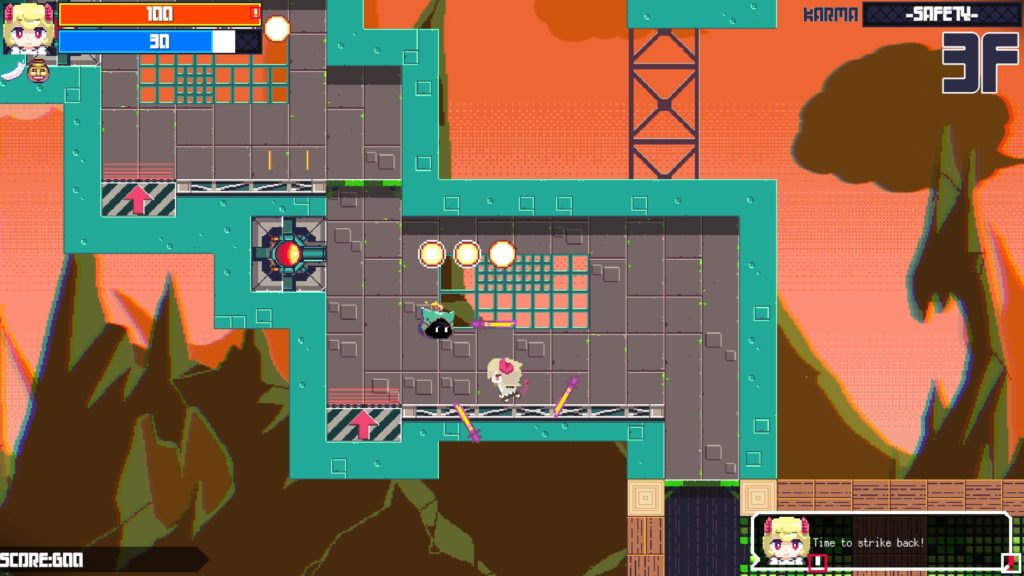
Lean on content, but delivers a satisfyingly difficult experience
Tokoyo aims to deliver a 2D platformer, and it excels at that at the expense of all else. There isn’t much depth or complexity, such as trying to complete certain item builds or bypassing stretches of the tower using arcane shortcuts. There isn’t even a difficulty slider. You’re given a character with an ability, you generally just pick up any items that you can, and you have to clear each and every floor’s puzzle or challenge. Coins can be collected for points, but otherwise have no effect on your run. Defeating enemies doesn’t affect your score either, so skillful avoidance is often the better choice.
There are five characters with different weapon archetypes – melee insta-kill blades that circle the player like Mario Kart triple shells, long-range low-damage seeker missiles, a medium-range mark-for-death defensive aura, and more. They’ll affect how you progress levels where you have to clear enemies, as some characters may have to be more patient with their weapons than others. Additionally, different characters will have different end bosses. Otherwise, the backstory and epilogue for completion don’t really offer much literary depth or gameplay tie-in, and are utterly forgettable.
As for items, there isn’t that much to say about the limited cast of items that offer very muted effects, intended to be stacked but limited by severe RNG. Only a few items are guaranteed at certain points of the game, such as a choice of one of three on the first floor. The rest are either generated as a part of the floor’s design, or looted off the occasional player corpse. The most useful items may be those that recover some health after each floor clear, or slightly slow down the floor clear timer – the karma meter, which ticks down as you climb a floor and is rewarded per floor clear – or even those that give a 10% increase to jump height, as it gives some extra clearance to your jumps to navigate the precisely mapped level. The DPS items definitely have a use in decreasing the time to kill the final boss, but certain items may need to be stacked more to be useful and thus depend even more on RNG. In the end, you’ll have very little opportunity to choose your own items, and instead are usually at the mercy of the run’s RNG.
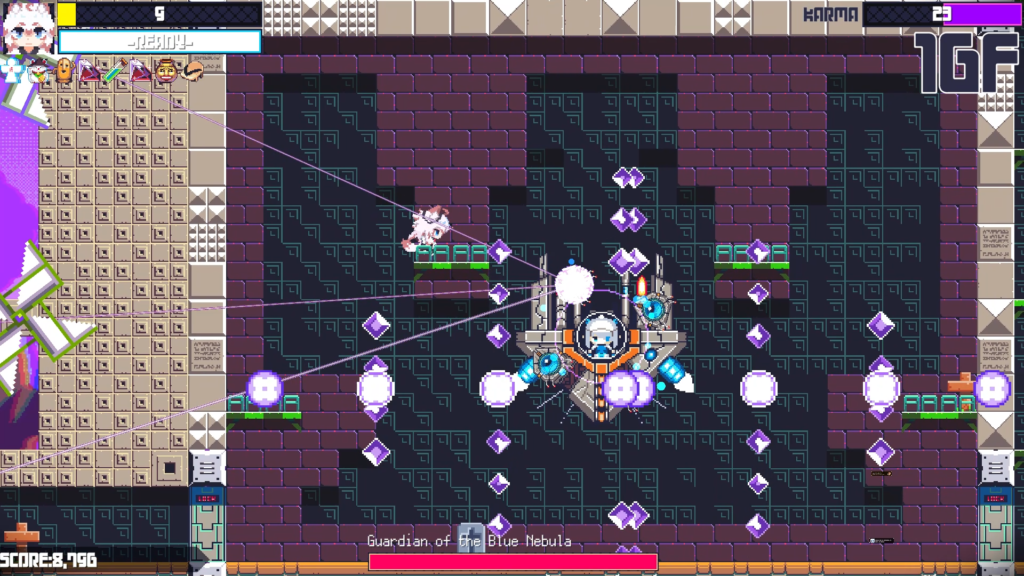
Not overly difficult to complete, but extremely challenging to place highly on the leaderboard
In the end, completing the game just isn’t overly difficult. As someone who would consider themself a “gamer” but who has a little 2d platforming experience, I was able to clear the tower with a few deaths on my first day. Even with the ramped up difficulty in the later regions of the tower, Tokoyo is generous enough with revives that most players are guaranteed to clear it, although sacrificing their score to do so. Upon death, you can choose to revive or end the run and select a message for the gravestone you leave behind – some are just basically voicing indignation, some are weirdly specific and relevant advice for the floor, and some are a statement that somehow forces you to take a moment and self-reflect over life as a whole. Reviving just costs some in-game currency that is earned in copious amounts for progressing through a new tower for the day.
However, completing the climb with a high ranking score is a completely different story, as the only way to attain a high score is by taking no damage, and racking up an increasing combo multiplier that only grows as you flawlessly climb higher. I’ve had some days of attaining fairly high scores and can confidently say that some high scores on the leaderboard are perfect runs of clearing 40+ floors. The daily RNG definitely affects the attainability for a perfect score, and even different tower permutations probably offer different potential max scores.
Outside of climbing the tower, the only other feature that Tokoyo offers is the boss gallery, where you can re-fight any bosses that you have encountered. This feature is definitely useful for practicing the final bosses, as some of them may even have more attacks than can be revealed in a single encounter.
Modding is supported for Tokoyo, but it’s mainly for custom characters. I didn’t personally experiment with this feature, but it seems that the library of mods is fairly small and difficult to locate, as the modding scene appears to just be a few individuals on Twitter.
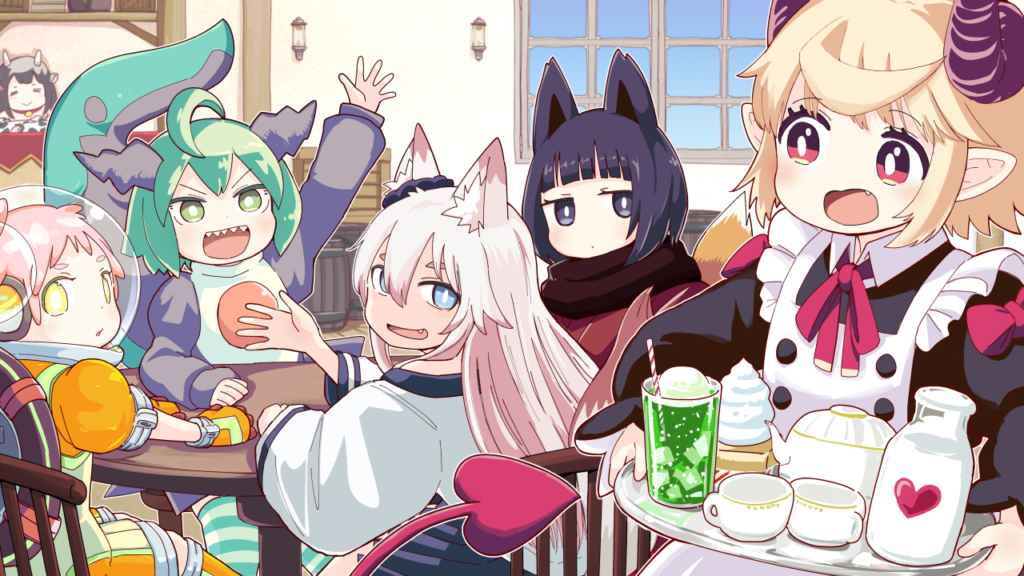
Tokoyo: A laudable release from a solo-dev with a serious passion for precision 2d platformers and kawaii aesthetic.
From the art to the impeccable level design, and topped off with the technological centerpiece that is the daily procedural generation and community integration, I believe that saebashi has produced a wonderfully challenging and addicting platformer with no excessive frills.
